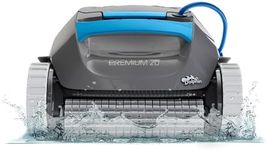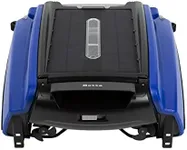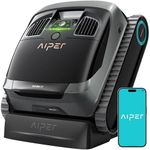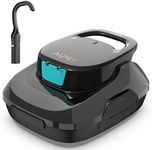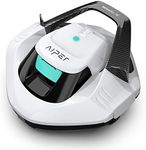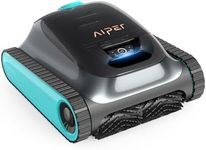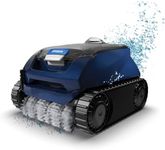Buying Guide for the Best Pool Skimmer Robots
Choosing a pool skimmer robot can make pool maintenance much easier and more efficient. These devices are designed to automatically remove debris like leaves, bugs, and dirt from the surface of your pool, saving you time and effort. When selecting the right pool skimmer robot, it's important to consider your pool's size, shape, and the type of debris you typically encounter. Understanding the key specifications will help you find a model that matches your needs and keeps your pool clean with minimal hassle.Pool CompatibilityPool compatibility refers to whether the skimmer robot is suitable for your pool type, such as above-ground or in-ground, and the pool's shape and size. This is important because some robots are designed for specific pool types or have limitations on the size or shape they can effectively clean. When looking at compatibility, check the manufacturer's recommendations for pool size (usually given in square feet or gallons) and shape (rectangular, round, freeform). If you have a large or irregularly shaped pool, make sure the robot can handle it; for smaller or standard-shaped pools, most models will suffice.
Power SourceThe power source indicates how the skimmer robot is powered—either by solar energy, rechargeable batteries, or a connection to your pool's filtration system. This matters because it affects convenience and running costs. Solar-powered robots are eco-friendly and require less maintenance, but may not work well in shaded pools or during cloudy weather. Battery-powered models offer flexibility but need regular recharging. Those that connect to the pool's filtration system can run continuously but may require more setup. Choose based on your pool's sun exposure, your preference for maintenance, and how often you want the robot to run.
Debris CapacityDebris capacity refers to how much dirt, leaves, and other debris the robot can hold before it needs to be emptied. This is important because a larger capacity means less frequent emptying, which is convenient if your pool collects a lot of debris. Debris baskets or trays come in different sizes; small capacities are fine for pools with minimal debris, while larger capacities are better for pools surrounded by trees or in windy areas. Consider how much debris typically falls into your pool to decide what capacity is right for you.
Navigation and CoverageNavigation and coverage describe how the robot moves around the pool and how thoroughly it cleans the surface. Some robots use random movement, while others have programmed patterns or sensors to ensure full coverage. This is important because better navigation means fewer missed spots and more efficient cleaning. For simple, small pools, basic navigation may be enough. For larger or oddly shaped pools, look for robots with advanced navigation features to ensure the entire surface is cleaned.
Ease of Use and MaintenanceEase of use and maintenance covers how simple it is to set up, operate, and clean the robot. This is important because a complicated robot can be frustrating and time-consuming. Look for features like easy-to-remove debris baskets, simple controls, and clear instructions. If you prefer a hands-off experience, choose a model that requires minimal intervention. If you don't mind a bit of hands-on work, you might be fine with a model that needs more frequent attention.
Build Quality and DurabilityBuild quality and durability refer to how well the robot is constructed and how long it is likely to last. This is important because a well-built robot will withstand exposure to sun, water, and pool chemicals. Look for models made from UV-resistant and corrosion-resistant materials. If your pool is used frequently or exposed to harsh conditions, prioritize durability. For occasional use, standard build quality may be sufficient.
